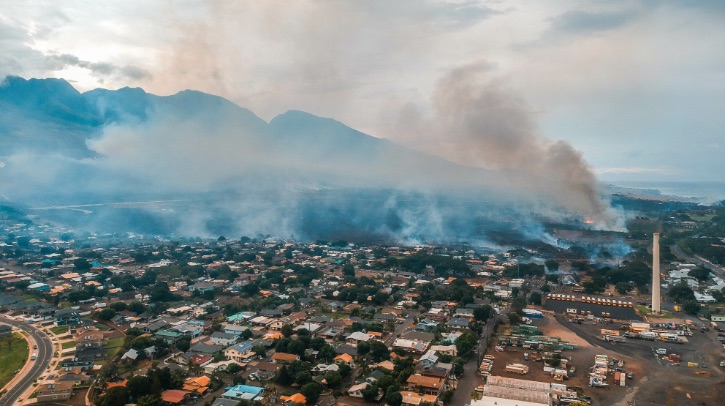The US Senate Commerce, Science, and Transportation Committee has approved seven measures to improve fire weather forecasts and warnings in remote or rural areas in Hawai‘i and across the country and promote the use of artificial intelligence (AI) to better predict and respond to extreme weather.
Improving fire weather forecasts
The measures were authored by US Senator Brian Schatz (D-Hawai‘i) and have been included as amendments to several bills. “By improving fire weather forecasts and warnings, we can save lives and communities,” said Senator Schatz, a member of the Senate Commerce, Science, and Transportation Committee. “The committee’s vote today (July 31) gets us one step closer to enacting life-saving measures that will improve weather forecasts and fire warnings in Hawai‘i and across the country. It also will help us realize AI’s full potential in a safe and responsible way.”
The seven provisions approved by the committee would mandate fire weather forecasts and warnings be disseminated to remote, isolated or rural communities as effectively as anywhere else in the USA. It would also look to strengthen weather forecasts with better data by directing the National Oceanic and Atmospheric Administration (NOAA) to establish and maintain a National Mesonet Program. As these weather observation data networks observe and track mesoscale weather events and local meteorological data – such as soil moisture and water levels, to better forecast weather, flood, fire and agricultural impacts – establishing the National Mesonet Program and outlining its objectives is expected to help address critical gaps in weather data and forecasting.
Artificial intelligence for extreme weather prediction
Additionally, Schatz’s TAME Extreme Weather Act amendment requires NOAA to adopt and implement AI technologies to better predict and respond to extreme weather. The measure also urges NOAA to consider how to recruit and retain the AI workforce of the future, creating new scientific and technical jobs.
The amendment would also award cash prizes to help encourage AI innovations. In particular, the amendment is expected to spur studies to help update or remove unnecessary regulations and enable positive deployments of AI technology to occur.
Finally, the provision would also build on Schatz’s Open, Public, Electronic and Necessary (OPEN) Government Data Act, which required that federal agencies by default publish their data in a machine-readable format. This amendment would ensure that the new, curated public data sets for AI systems that are included in the Future of AI Innovation Act build upon the foundation created by the OPEN Government Data Act. AI is only as useful as the data it’s trained on, and making government data safely available for AI means that AI can help solve important problems.
For more of the top insights into the future of artificial intelligence in weather forecasting, read the opinion piece by Sami Niemelä, director of the meteorological and marine science research program at the Finnish Meteorological Institute, here.



